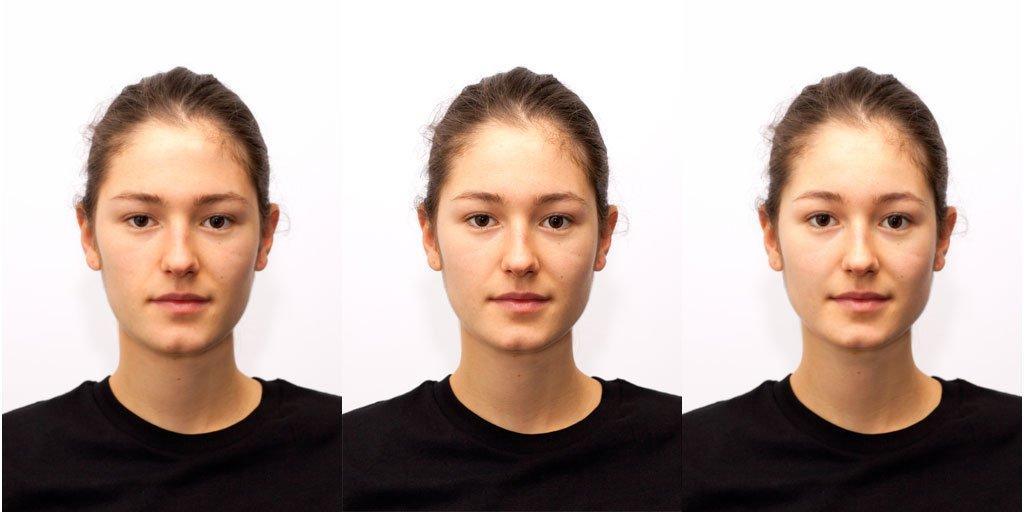Your support helps us to tell the story
From reproductive rights to climate change to Big Tech, The Independent is on the ground when the story is developing. Whether it's investigating the financials of Elon Musk's pro-Trump PAC or producing our latest documentary, 'The A Word', which shines a light on the American women fighting for reproductive rights, we know how important it is to parse out the facts from the messaging.
At such a critical moment in US history, we need reporters on the ground. Your donation allows us to keep sending journalists to speak to both sides of the story.
The Independent is trusted by Americans across the entire political spectrum. And unlike many other quality news outlets, we choose not to lock Americans out of our reporting and analysis with paywalls. We believe quality journalism should be available to everyone, paid for by those who can afford it.
Your support makes all the difference.Scientists have identified countless ways that we judge people based on their looks, even when those judgments have no basis in reality.
"We form these immediate impressions of people — we just can’t help it," Alexander Todorov, a psychology professor at Princeton University, told Business Insider.
Todorov’s lab tests responses to computer-generated faces to model traits associated with perceived attractiveness, trustworthiness, competence, and more.
Todorov warns that these impressions are highly inaccurate. People have many biases, including halo effects — where we assume one positive trait will be followed by others — and stereotypes — where we associate behaviors with looks. Still, the professor says it’s worth understanding them, if only to fight them.
We’ve highlighted some findings from Todorov and others below.
We assume more attractive people rate higher in other positive traits, too, perceiving them as more competent, intelligent, trustworthy, and more.
We associate baby-faced appearance with physical weakness, naïvety, submissiveness, honestness, kindness, and warmth. Baby-faced appearance includes relatively larger eyes, a rounder face, a larger ratio of cranium to chin.

Yes, women tend to have more baby-faced qualities than men.
Neutral faces often resemble emotional expressions. Angry faces are perceived as less likable and trustworthy and more powerful, hostile, and threatening, while the opposite is true for happy faces.
Todorov’s lab modeled perceived traits by having US college students evaluate computer-generated faces. To avoid getting into questions of race, the study used only white faces.
Perceived competence increases from left to right in the faces below. Associated traits include darker skin — in this case a factor of gender, not race — and attractiveness.

Perceived dominance increases from left to right. Associated traits include include darker skin and masculine features.

Perceived extraversion increases from left to right. Associated traits include face width and resemblance to a smile.

Perceived likability increases from left to right. Associated traits include attractiveness and resemblance to a smile.

Perceived threat increases from left to right. Associated traits include masculine features and resemblance to an angry expression.

Perceived trustworthiness increases from left to right. Associated traits include feminine features and resemblance to a smile.

You can see how one face can be digitally manipulated to look more or less neurotic, extraverted, and more in the images below from a study by Mirella Walker and Thomas Vetter at the University of Basel.

Another type of facial bias: more typical faces are viewed as more trustworthy. This bias contributes to racism and xenophobia.
People also react more positively to faces that resemble their own. This was tested by having people evaluate the trustworthiness of morphed faces containing varying percentages of their own face.

Troublingly, people also judge criminality and remorsefulness based on faces, as both Todorov and Walker have shown. Perceived criminality increases from left to right in the top two rows; perceived remorsefulness in the bottom two.

Studies have shown that facial bias affects who we vote for, date, hire, prosecute, convict, and more.

What’s wrong with facial bias?
Although the face can give some clues to behavior, Todorov argues that people tend to imagine false insights or overemphasize real ones, when they would be better off consulting other information. Also links between facial morphology and behavior may only be the result of societal bias, where people act a certain way because we expect them do, and facial bias just reinforces these stereotypes.
Read more:
• This chart is easy to interpret: It says we're screwed
• How Uber became the world's most valuable startup
• These 4 things could trigger the next crisis in Europe
Read the original article on Business Insider UK. © 2016. Follow Business Insider UK on Twitter.

Join our commenting forum
Join thought-provoking conversations, follow other Independent readers and see their replies
Comments